The things we record and why - part three
We are no longer building saddle trees, but we have two videos about how Western saddles fit horses available on our westernsaddlefit.com website.
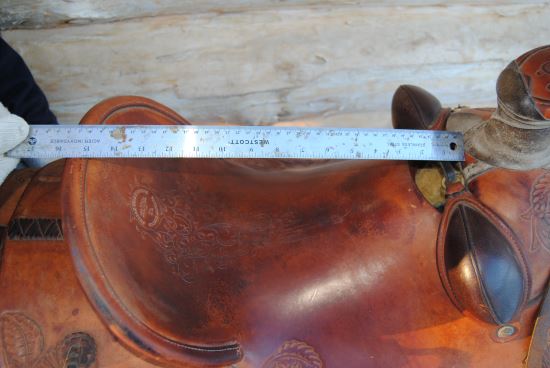
There are a whole lot less measurements we take that affect the fit for the rider compared to the measurements that have to do with fitting the horse. And here they are!
Seat length
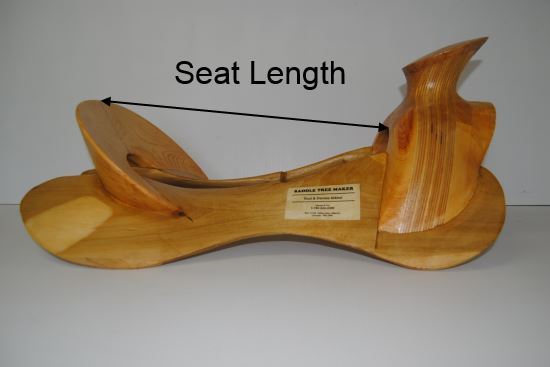
If someone knows only one thing about measurements on saddles, it will be seat length. However, this is one of the most inaccurate and variable measurements around. But since it can still be measured on a finished saddle (although the measurement on the saddle is different than the measurement on the tree), it is still the most used measurement around. Se we use it, and we measure this in both the wood and the rawhide.
One of the things that makes it less than ideal is that the way it is measured varies. We measure from the center of the top of the cantle to the top of the hand hole, as pictured. These are two easy to find spots. Some people measure from the top of the cantle to the base of the horn. The problem with this method is finding a consistent spot for the base of the horn, particularly on wood post trees where everything blends together. It is important to be aware that the measurements differ depending on how they are taken, so you may be comparing apples and oranges unless you clarify which way you are measuring.
The other variables that affect seat length are talked about in our Seat Length and Thigh Length Relationships page. I won't repeat it all here, except to say that seat length doesn't give you a totally accurate picture of the room between the fork and cantle for the rider. Honest...
Riders need to be aware that the finished seat length will be shorter than the seat length in the tree since there will be leather covering both the front of the cantle and the back of the fork. How much less this is depends a lot on how the saddle maker builds his saddle, but 1/2" shorter is a common measurement saddle makers tell us.
Thigh length
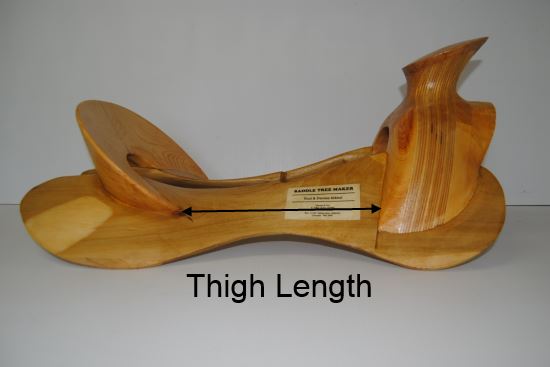
Another measurement we have kept records of from the beginning is thigh length - the room for the rider's thigh measured horizontally between the front corner of the cantle and the back of the fork, as pictured. We also measure this in both the wood and the rawhide. Most adults fit between 8 and 10 inches of thigh room as measured this way on the tree if they ride with moderately long stirrups and are not looking for an arena saddle for a specific event. It is really hard to measure something equivalent to this on a finished saddle since the back of the fork is hidden under the seat, rigging, etc. It is also important to know that a measurement like this in the saddle will measure longer than in the tree. Yes, there is leather in the way which would shorten it up, but you are measuring higher up on the cantle and fork, and because they lean apart from each other, the measurement will be greater.
We talk a lot with saddle makers about this measurement when they have riders who may be "outside the norm". This is a very useful check if you are building for a smaller person who doesn't want to be swimming in their saddle, and for the larger ones who need extra room. Using some of our tricks, we can often give the rider the room they need while still keeping them more centered in the saddle if we use thigh length as our guide.
We also discuss thigh length when the order has a cantle that is taller or shorter than average. This is because the cantle height really affects the seat length measurement and it would be easy to get trees that are too long or too short for the rider going with just the seat length measurement in these cases.
We've said this in other places on our website as well, but something we use a lot to get a good starting point in figuring out thigh length for a particular rider is Dennis Lane's rule of thumb.
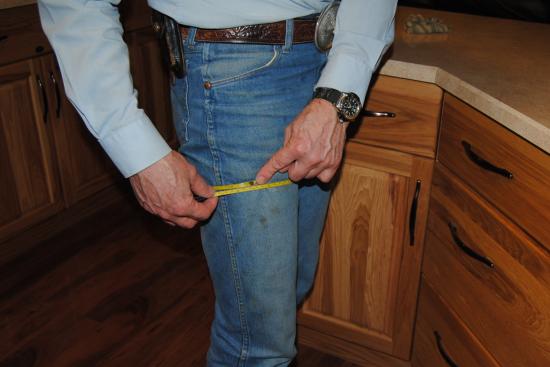
Take the circumference of your leg where it fits between cantle and fork in inches. Divide by three (close enough to Pi for what we need) which gives you diameter, and add an inch. It is changed if people like to be tight (for example, arena ropers) or have extra room (such as cutters and similar events). If people like to ride with shorter stirrups which puts their thigh more horizontal, it needs to be lengthened as well. But this is a good place to start.
Gullet to gullet
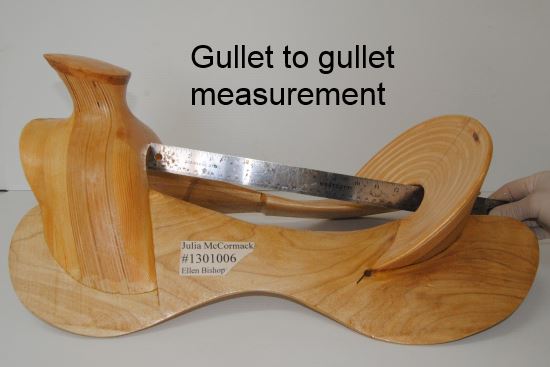
We call it gullet to gullet measurement and we take it both in the wood and the rawhide. This is probably the best measurement to really give the actual room for the rider because it measures the distance between fork and cantle for the rider's body. However, the saddle maker puts in his ground seat and totally hides the measuring point, not to mention shortening it up. And since every saddle maker puts in their ground seat differently, and maybe even differently depending on the gender and shape of the rider, a finished measurement (if it were possible) would be totally inconsistent with the measurement in the tree. But, we still record it, just in case...
Actually, in looking back at all the records we have kept, I discovered that we started recording this one right at the beginning. Obviously, we were trying to figure out a more consistent way for measuring the room for the rider even at that point. But after a while, Rod quit filling in those lines on the chart. I guess he didn't see much use for it, and I forgot that we had ever kept it. Then about five years when I redid the recording sheets, I added it in again. Is it useful? Well, it really hasn't been - yet - but I think maybe it could be... So we keep writing it down.
"Chart length", properly called government length
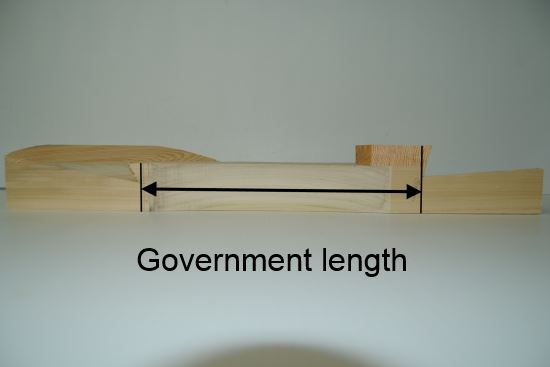
When Rod started building trees he had a couple of charts, but the one for the measurement we eventually learned was the government length was the main one. So, since we didn't know the real name (thanks goes out to Warren Wright for informing us of the historical name) we just called it the "chart length", and we still do. This measurement on the inside of the bar between the fork cut and cantle cut really does govern a lot of the rest of the tree and how it goes together, and it is the first thing we mark out when we start marking out a set of bars. Knowing this measurement, I can quickly figure out how long the finished bars will be because I know how much bar we have in front of the fork cut and behind the cantle cut. I can easily figure out thigh length relative to chart length so long as I know the fork angle and the cantle type (regular or Taylor). Since those things consistently change the angle of the fork and cantle cuts, I have a few consistent numbers to subtract from chart length to get the thigh length. But seat length? I have to go to my charts, much expanded since the first one Rod brought home with him when he learned to build trees. They are now on six pages, with six charts on each page, to figure out seat length for every permutation and combination of fork angle, cantle type, cantle angle, cantle height and government length. We have derived that information by measuring trees we have made, and with some of the recent additions to our repertoire, some of those charts are still pretty empty...
So that's it for the rider. But there are still 29 more columns in our database to talk about...
